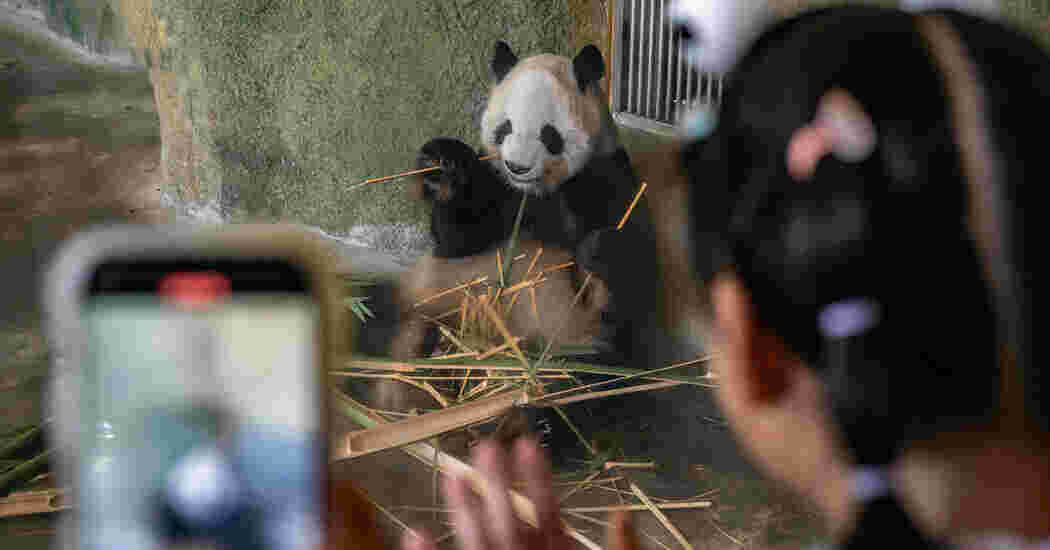## Panda Power: How a Conservation Program Became a Cash Cow
In the 1990s, China embarked on a grand endeavor: sending pandas to foreign zoos to be bred, with the ultimate goal of returning future generations to the wild. The program, touted as a symbol of global conservation, has instead become a money-making machine, with little to show for its proclaimed success.
An investigation by The New York Times, relying on over 10,000 pages of documents, interviews, and on-site visits, reveals a troubling picture: a program driven by profit and fueled by aggressive breeding practices, often at the expense of the pandas themselves.
Despite the rhetoric of conservation, zoos have viewed pandas as cash cows, attracting visitors, generating merchandise sales, and boosting their prestige. China, in turn, has benefited from hefty rental fees and the global adoration of these cuddly creatures. The program has resulted in a dramatic increase in captive pandas, from 126 in the early 2000s to over 700 today, while the number of wild pandas remains shrouded in mystery, with the Chinese government's count widely considered unreliable.
The drive for profit has led to unethical breeding practices. Pandas notoriously struggle to mate in captivity, leading scientists to rely heavily on artificial insemination. This has resulted in injuries, pain, and even death for individual pandas. Records show instances of animals being subjected to multiple rounds of insemination with excessive dosages of anesthesia, often leaving them in distress and partly conscious during painful procedures.
While zoos claim the program has advanced scientific understanding of panda reproduction, experts argue that little has been done to improve the genetic diversity of the species. China primarily sends pandas with already well-represented genes, prioritizing breeding ease over genetic diversity.
Meanwhile, the promise of returning pandas to the wild remains largely unfulfilled. Despite the program's stated goals, no cubs born in American or European zoos, or their offspring, have ever been released into the wild. While China has touted the release of a few pandas, the number pales in comparison to the number taken from the wild, with many remaining in captivity for their entire lives.
This exposes a fundamental flaw in the program: the relentless pursuit of breeding for profit overshadows the true welfare of the pandas. The program's success is measured not by the number of animals released, but by the number of cubs produced, and the lucrative revenue they generate.
The investigation also highlights the complicity of American zoos in perpetuating this cycle. While they may not directly profit from the pandas, they have actively sought out breeding opportunities, recognizing the financial and public relations benefits.
While some scientists argue that captive breeding is a necessary tool for endangered species conservation, others question the ethical justification when there's no realistic prospect of reintroduction and the focus remains on maximizing breeding and profit.
The panda program stands as a stark reminder of the potential for conservation efforts to be hijacked by financial interests, with the animals themselves becoming commodities in a global market. The true cost of this program, in terms of panda suffering and the failure to achieve its stated goals, is far from clear, yet the insatiable appetite for panda cubs continues.
The Panda Factories
In the 1990s, China began sending pandas to foreign zoos to be bred, in the hope that future generations could be released into the wild. It hasn’t gone as planned.


